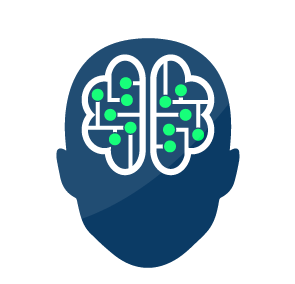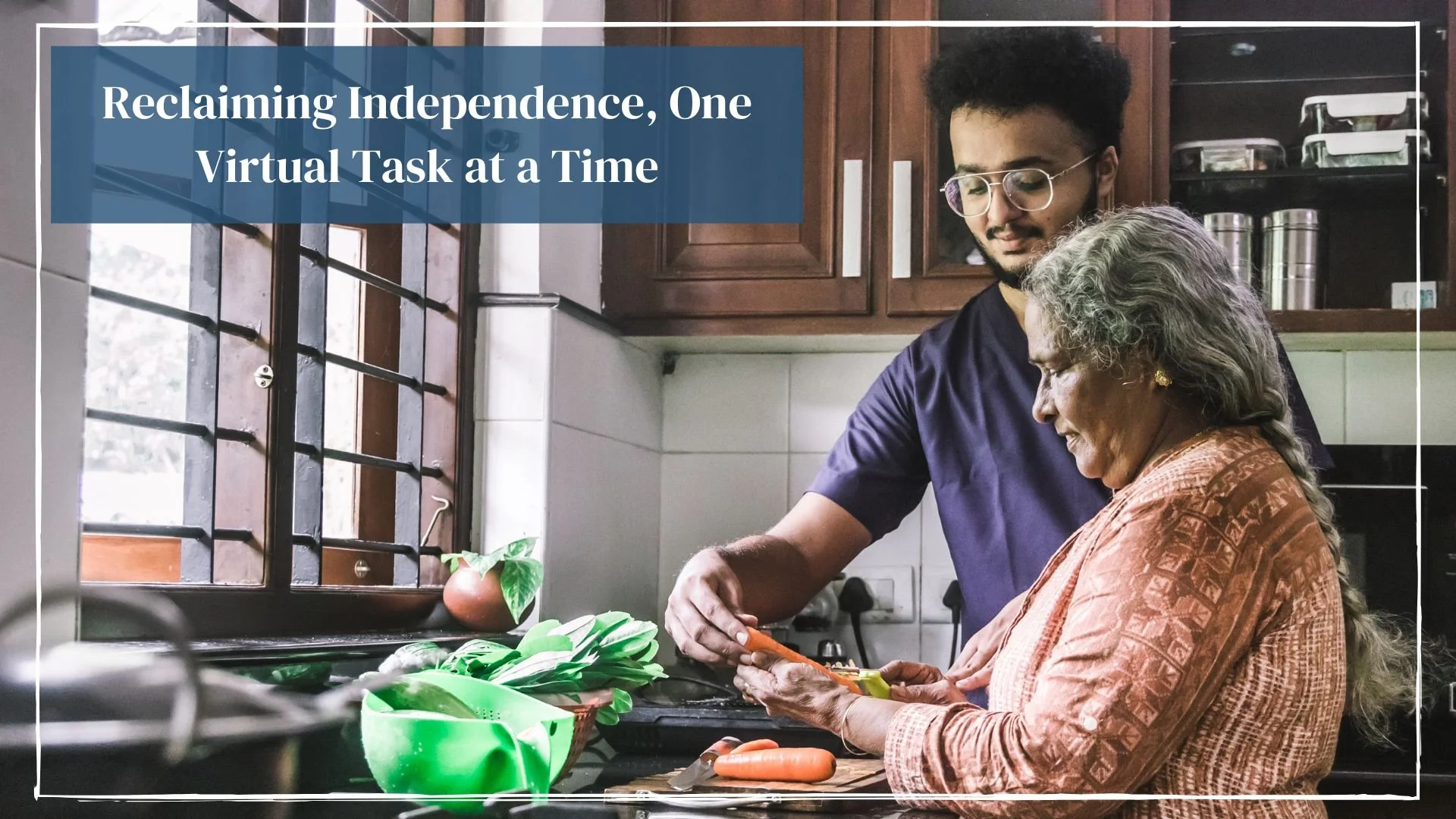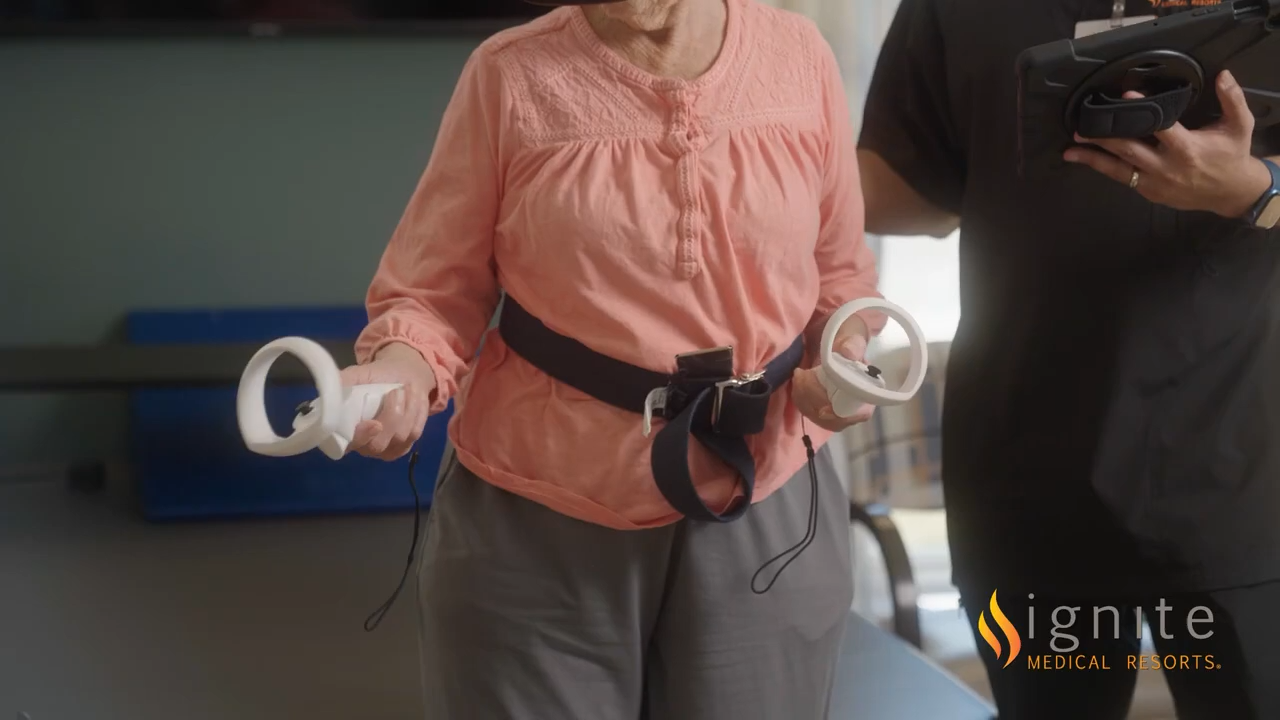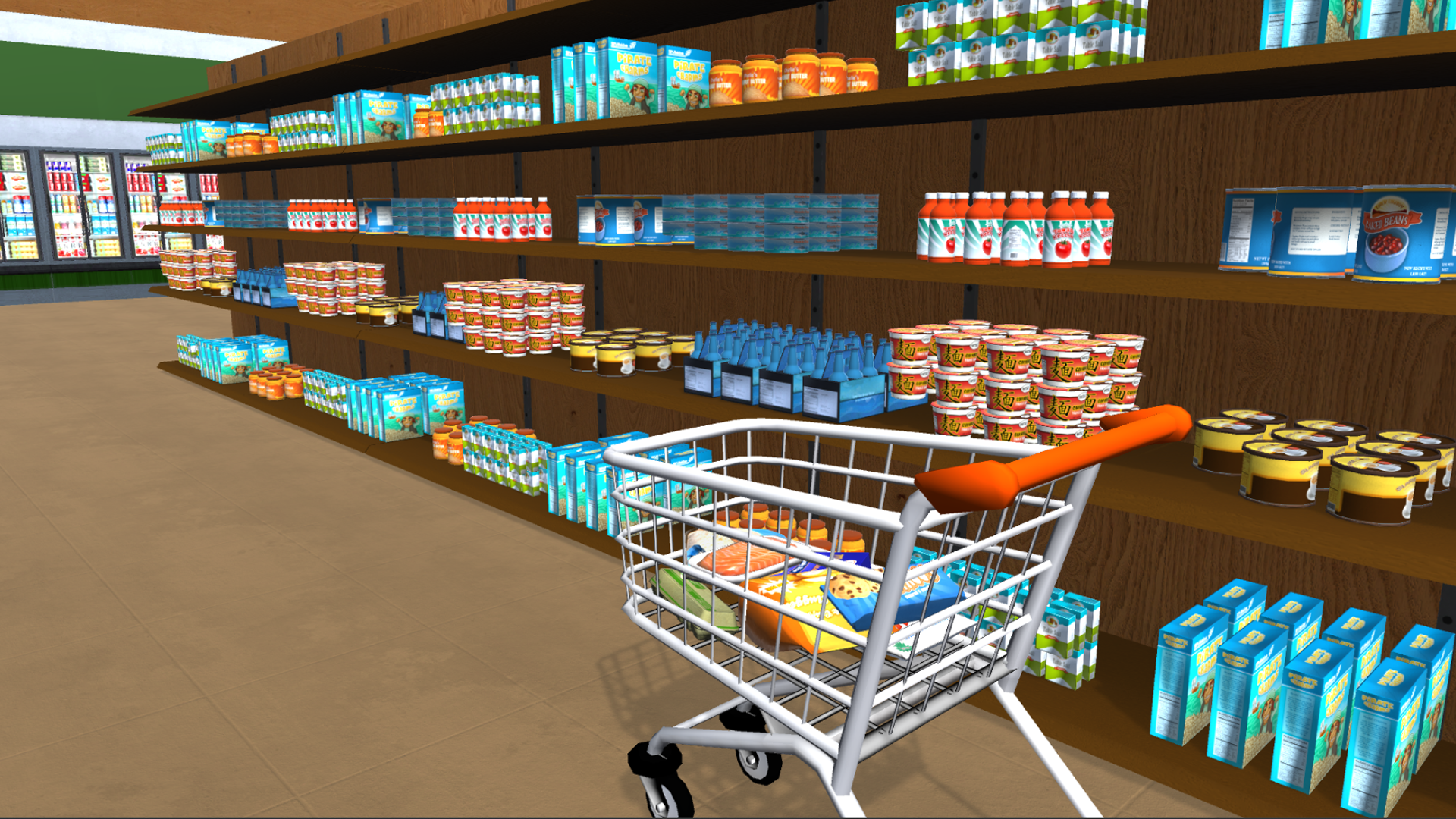Reclaiming Independence, One Virtual Task at a Time
Written by: Brianna Hodge
There’s something deeply personal about making a cup of tea in your own kitchen. It’s not just about boiling water—it’s about autonomy, memory, coordination, and confidence. For many patients navigating stroke recovery, spinal cord injuries, or neurodegenerative conditions, regaining that level of independence can feel distant, even unreachable.
That’s where virtual reality (VR) is changing the game.
As an occupational therapist, you know that therapy isn’t just about restoring movement, it’s about restoring life. That means returning to the small but meaningful activities that define our daily routines: tying shoes, picking apples from a grocery shelf, or folding laundry. These are more than chores. They are milestones.
In this blog, we’ll explore how VR is helping occupational therapists reimagine Activities of Daily Living (ADLs), using immersive home simulations that foster true independence. We’ll look at the science, real case studies, and how companies like Neuro Rehab VR are transforming what therapy looks like—one virtual kitchen at a time.
The Heart of Occupational Therapy: ADLs
Occupational therapy has always been grounded in function. While physical therapy might focus on gait or range of motion, occupational therapy is about enabling individuals to engage in the meaningful activities of their daily lives. These can include:
Basic ADLs: bathing, dressing, eating, grooming, and toileting.
Instrumental ADLs (IADLs): managing a home, shopping, cooking, managing finances, using a telephone.
Regaining these skills post-injury or illness is often the primary goal for patients. However, real-world practice of these tasks can be limited by clinic space, safety concerns, or simply lack of access to adaptive tools.
Enter VR.
The Science of Simulated Reality: Why VR Works
Virtual reality isn’t just a gimmick. It’s backed by neuroscience and rehabilitation research. VR provides:
Safe, repeatable environments: Patients can cook over and over without burning themselves or waste real food.
Controlled difficulty levels: Tasks can become gradually more challenging—fine-tuning motor, cognitive, and perceptual skills.
Immediate feedback: Through visual, auditory, and even haptic cues, patients learn from their actions in real-time.
Emotional engagement: VR adds novelty, challenge, and reward, critical elements for neuroplasticity.
Research:
A 2024 systematic review titled Effectiveness of Virtual Reality in Occupational Therapy for Post-Stroke Adults published in the Journal of Clinical Medicine offers compelling evidence supporting the use of VR in stroke rehabilitation. Analyzing 16 randomized controlled trials with over 600 participants, the review concluded that VR-based occupational therapy led to statistically significant improvements in Activities of Daily Living (ADLs) compared to conventional methods.
These gains were observed across diverse VR platforms, from immersive headsets to motion-tracking systems, and spanned key functions such as dressing, meal preparation, and personal hygiene. Notably, the improvements were not just limited to upper limb function or motor recovery, but extended to real-world functional independence, with several studies showing measurable enhancements in scores on the Barthel Index and FIM (Functional Independence Measure).
The review emphasized that VR’s ability to simulate meaningful, repetitive, and engaging tasks is what likely drives its effectiveness—highlighting its value as a potent tool in post-stroke occupational therapy (Síbila Floriano Landim et al.).
Research:
The 2023 systematic review and meta-analysis titled Efficacy of Virtual Reality-Based Training Programs and Games on the Improvement of Cognitive Disorders in Patients, published in BMC Psychiatry, underscores the functional benefits of VR beyond cognitive enhancement.
Among the studies analyzed, patients engaging in VR-based tasks that mimicked real-life scenarios—such as setting a table, preparing meals, or completing home routines—demonstrated significantly greater gains in independence scores compared to those undergoing standard therapy protocols. The meta-analysis highlighted that these task-oriented VR interventions not only improved executive functioning and attention but translated into meaningful outcomes in daily life, particularly in the completion of Activities of Daily Living (ADLs).
By immersing patients in safe, repeatable, and stimulating environments, VR fostered both engagement and neuroplastic adaptation—key factors in driving functional independence across diverse clinical populations (Khadijeh Moulaei et al.).
Home Simulations Examples
Let’s break down how VR is bringing core ADLs into therapy using fully immersive scenarios.
🥘 Cooking in a Virtual Kitchen
From hand-eye coordination to sequencing and safety awareness, cooking demands complex integration of physical and cognitive skills. In VR, patients can practice:
Chopping vegetables using adaptive tools
Turning knobs on stovetops
Remembering recipe steps
Recognizing hazards (e.g., boiling water, raw chicken cross-contamination)
Therapists could also assess memory, planning, and executive function in a way that’s hard to replicate in static environments.
👚 Dressing: Practicing Motor Precision and Problem-Solving
Dressing is deceptively complex. It requires bilateral coordination, sequencing, visual-motor integration, and even trunk control. VR allows patients to:
Choose clothes from a virtual closet
Practice pulling on shirts, fastening buttons, zipping jackets
Switch clothing types depending on weather cues (great for executive functioning)
🛒 Grocery Shopping: Simulating Real-World Complexity
Shopping involves walking, stopping, scanning shelves, carrying bags, budgeting, and more. In VR grocery stores, patients can:
Push a cart while navigating obstacles
Scan labels for prices and ingredients
Use simulated debit cards for purchases
Follow a shopping list in a distracting, multitask-rich environment
This is ideal for dual-task training—especially for patients with mild cognitive impairment (MCI), Parkinson’s, or post-concussion symptoms.
Imagine This Scenario: A Return to the Everyday
Imagine you’re an occupational therapist working with a patient in her late 60s. Let’s call her Maria.
Maria recently experienced a left-sided stroke. She’s regaining speech through aphasia therapy, but her right arm coordination is limited. Her balance is unsteady. She hasn’t cooked a meal in six months, not because she doesn’t want to, but because she’s afraid to try.
Instead of relying only on worksheets and tabletop tasks, you introduce her to virtual reality.
In her first session, she enters a calming, virtual kitchen. With the help of a stylus and motion tracking, she lifts a virtual spoon. The repetition helps retrain her motor control without the risk of dropping anything hot or fragile.
By week four, Maria is virtually cracking eggs, using both hands in simulated movements that gently challenge her coordination and grip strength. She's focused and engaged, more than she ever was with traditional rehab tools.
By week eight, she’s walking with her real-life walker while navigating a virtual grocery store. She uses a controller to check off a shopping list, turn down aisles, and make choices. It’s cognitively demanding, physically supportive, and entirely within her ability, because you’ve adjusted the difficulty to match her progress.
Eventually, Maria reaches the point where she’s ready to try these activities in real life again. Not because you told her to, but because she felt ready.
This is the kind of therapeutic transformation VR makes possible: not just safer repetition, but confidence built on meaningful, task-oriented success.
This is the future of occupational therapy, centered around the patient, supported by innovation.
Neuro Rehab VR: Smart Therapy™ Meets Daily Life
Neuro Rehab VR is at the forefront of this transformation.
Their Smart Therapy™ Complete Solution is built for clinicians who want more than just movement data—they want to see real-life outcomes. With FDA-registered software and HIPAA-compliant cloud storage, the system enables therapists to guide patients through home-like simulations including:
Kitchen-based memory and coordination drills
Grocery store navigation with dynamic balance elements
Laundry room sequencing with reach and bending challenges
Driving simulation with real-time attention and reaction training
What sets Neuro Rehab VR apart is not just the range of tasks, but the clinical-grade data that supports them. Therapists can track:
Task completion time
Movement symmetry and range
Cognitive accuracy (e.g., following steps or identifying hazards)
Patient engagement and adherence
And it’s not just in clinics, facilities like Cedars-Sinai, VA Medical Centers, and Atrium Health are already using the Smart Therapy system in inpatient and outpatient settings.
Therapist Voices: What They’re Saying
“We used to have patients rehearse folding towels at a table. Now we put them in a virtual laundry room where they pick up clothes, sort them, and bend to load a washer. It’s dynamic. And they love it,” says Erica, OT at an inpatient neuro unit in Texas.
Another therapist reported, “One of my patients with early-onset Alzheimer’s was able to shop for ingredients in a virtual grocery store. It was astonishing and amazing to watch, especially when just a few months ago he was struggling so much.”
Bridging Gaps in Access and Motivation
Not all clinics have the space, equipment, or staffing to simulate real-world environments like kitchens, laundry rooms, or grocery stores. Creating those setups can be costly, time-consuming, and logistically difficult, especially in acute care or rural outpatient settings. That’s where VR steps in as a powerful equalizer.
With VR, you can bring the entire home environment to the bedside. A patient recovering from a stroke in a hospital room can practice making coffee in a virtual kitchen. Someone in a rural clinic hours away from the nearest city can navigate a virtual grocery store. Even those receiving care in their own homes can work on dressing tasks or household chores using a headset and controller, without needing real-world objects or environments to be physically present.
It also addresses one of the biggest barriers in rehab: motivation. Many patients—especially those dealing with fatigue, chronic pain, or cognitive impairments, become disengaged with repetitive tabletop exercises or static instruction. VR reintroduces purpose, personalization, and a sense of progress. When patients are folding virtual clothes, selecting outfits, or driving through a simulated neighborhood, the activity feels relevant to their goals and identity—not just abstract practice.
And because therapy in VR is gamified, it taps into the brain’s reward circuitry. That intrinsic motivation—earning points, unlocking progress, seeing success—boosts engagement, emotional investment, and ultimately, neuroplasticity. It’s not just more fun. It’s more effective.
What to Look for in a VR ADL Program
If you’re considering bringing VR into your occupational therapy practice, here are some features to prioritize:
✅ Realistic ADL simulations that are culturally appropriate
✅ Adjustable difficulty levels for physical and cognitive needs
✅ Therapist controls for supervision and customization
✅ Data collection for documentation and progress tracking
✅ HIPAA and FDA compliance for clinical use
✅ Training and support for implementation
The Road Ahead: Future of ADL in Virtual Rehab
We’re only scratching the surface. Emerging research is exploring:
Olfactory VR for kitchen-based therapy (smell of coffee to enhance memory recall)
Eye-tracking in VR to assess visual neglect or cognitive scanning
Haptic gloves to simulate texture when folding laundry or gripping utensils
Even insurance companies are beginning to recognize VR’s role in reducing readmissions and supporting faster return to function, a promising shift for clinicians and patients alike.
Conclusion: Independence Starts Here
If you’re an occupational therapist reading this, know this:
You are the bridge between “I can’t” and “I can again.”
VR is just another tool—but it’s a powerful one. It helps patients see themselves doing the things they feared they might never do again. It builds confidence before competence. It fosters repetition without boredom. It creates safety while challenging limits.
So the next time you’re trying to find a new way to teach dressing or grocery shopping, maybe you don’t need a field trip. Maybe you just need a headset—and a vision of what’s possible.
-
Khadijeh Moulaei, et al. “Efficacy of Virtual Reality-Based Training Programs and Games on the Improvement of Cognitive Disorders in Patients: A Systematic Review and Meta-Analysis.” BMC Psychiatry, vol. 24, no. 1, 12 Feb. 2024, https://doi.org/10.1186/s12888-024-05563-z.
Síbila Floriano Landim, et al. “Effectiveness of Virtual Reality in Occupational Therapy for Post-Stroke Adults: A Systematic Review.” Journal of Clinical Medicine, vol. 13, no. 16, 7 Aug. 2024, pp. 4615–4615, https://doi.org/10.3390/jcm13164615.





